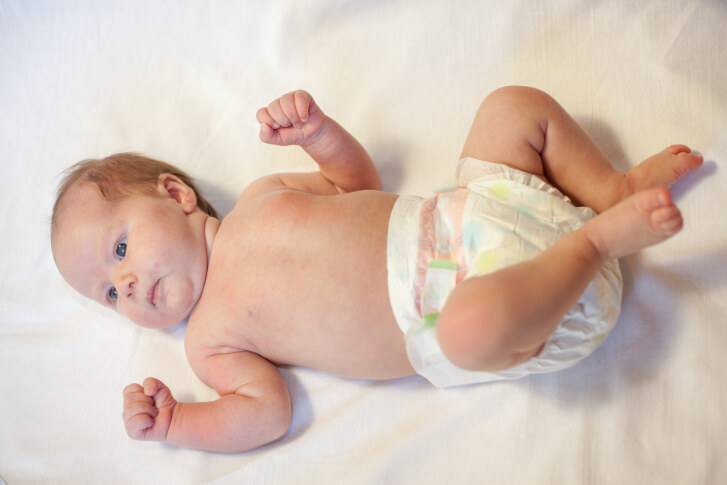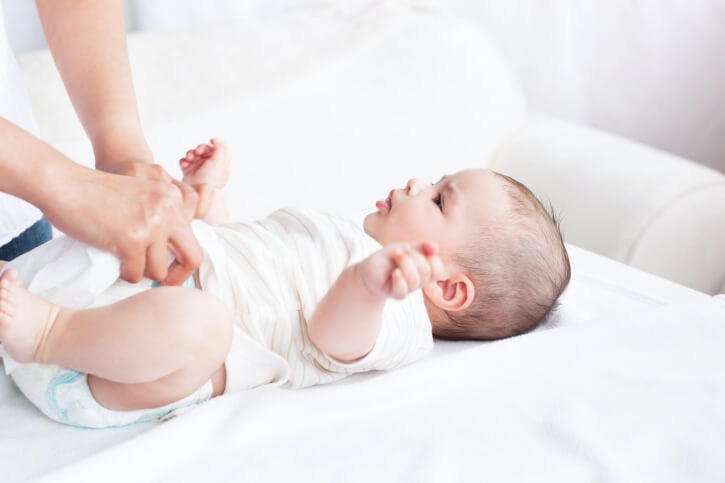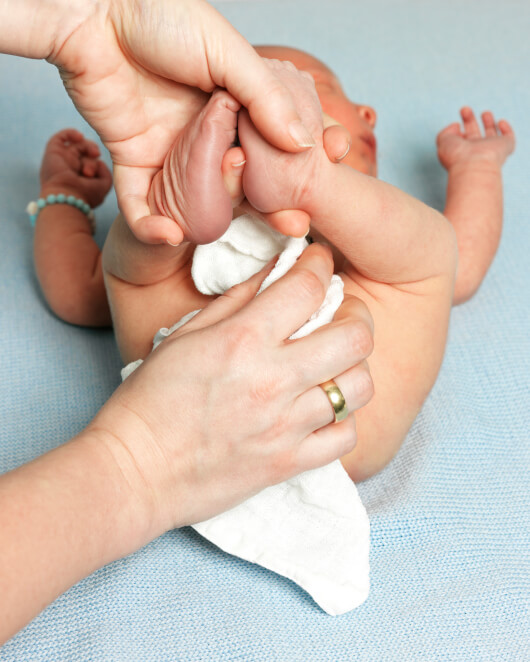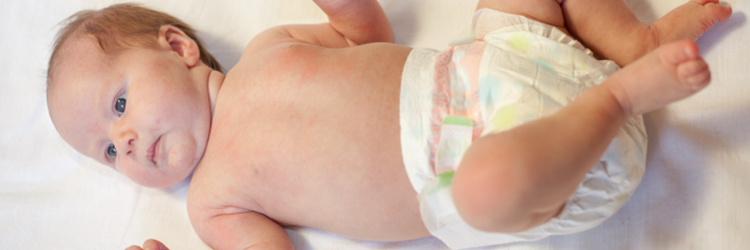Diaper rash in infants is a common condition that can make the baby’s skin tender, scaly, red and sore. It is a cutaneous disorder in infants and mostly found in 9 to 12 month old babies. The rash will possibly affect the baby’s genital area, the outer skin in the folds of the bottom and thighs. The infected body areas can appear either moist or dry. They may sometimes also appear pimply or shiny.
Identifying Diaper Rash in Infants:

Contact Diaper Rash: This is the most common type of diaper rash. This kind of rash appears in the form of irritated, red and flat skin. It can result in painful blisters on the skin.
Seborrhea: This is an inflammatory disorder that can affect different body areas, but can be particularly severe in the diaper area. It appears as red, big and sharply demarcated spots over the lower abdomen, genitalia and groin. Typically, these spots are raised, greasy, thick and rough.
Yeast Rash: When the skin is injured, yeast from the bowels can invade the baby’s skin. It particularly occurs due to prolonged rash or frequent use of antibiotics. It is a patchy, raised and red rash, mostly found on the genitalia.
Allergy Ring: Various types of food stuffs can irritate a baby’s gut, particularly acidic foods like tomato and citrus-based sauces. This kind of rash appears in the form of a red ring around the anus of the baby.
Intertrigo: Intertrigo is a rash that occurs within the skin creases around the diaper and in folds where the skin of a baby rubs together. Moisture and heat mixed with urine can cause a burn-like appearance.
Some Important Tricks to Minimize or Prevent Diaper Rash:

Changing diapers at two to three hour intervals is important. Frequent diaper changes will keep your baby’s bottom moisture-free.
2. Wash Cloth Diapers Properly
Clean-up cloth diapers properly. Mix half a cup of vinegar in water and soak diapers for 10 to 15 minutes. This is extremely helpful in removing alkaline irritants.

You should use normal plain water and unscented wipes to wash your baby’s bottom. These are actually good and less irritating for your baby.
4. Change Poopy Diapers As Soon As Possible
Newborn babies often have frequent low volume stools. Changing poopy diapers helps keep the rash away.
5. Wipe Well
Be sure to wipe all the urine and stool away.
6. Diaper Creams [3] You must consult your doctor immediately if your baby develops diaper rash. Here are some creams your doctor may recommend:
- Acid mantle – It is excellent for moderate diaper rashes and available in all medical stores.
- Zinc oxide – This cream is useful to treat moderate rash.
- Heal and Soothe – This soothing lanolin ointment is great for preventing sore bottoms.
- Clotrimazole Anti-fungal Ointment – It is extremely helpful to treat stubborn rashes.
- Make a Combination Your Own – Mix following creams together in the palm of your hand and apply over to your baby’s bottom:
- Aluminum acetate Zinc oxide
- Acid mantle
- White petroleum ointment














